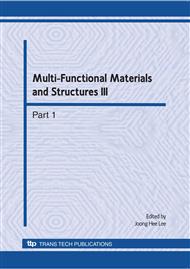p.1087
p.1091
p.1095
p.1099
p.1103
p.1107
p.1111
p.1115
p.1119
Testing the Applicability of an Expression for the Non-Arrhenius Ionic Conductivity in Solid Electrolytes
Abstract:
In a previous study, we have proposed a model that describes the non-Arrhenius ionic conduction behavior in superionic glasses. In the present report, the model is applied to analyze the conductivity behavior of a wide variety of solid electrolytes that include crystals, glasses, polymers, composites and mixed ionic-electronic conductors. From the analysis of the model, the physical factor responsible for the non-Arrhenius behavior has been extracted and discussed.
Info:
Periodical:
Pages:
1103-1106
Citation:
Online since:
August 2010
Authors:
Keywords:
Price:
Сopyright:
© 2010 Trans Tech Publications Ltd. All Rights Reserved
Share:
Citation:


